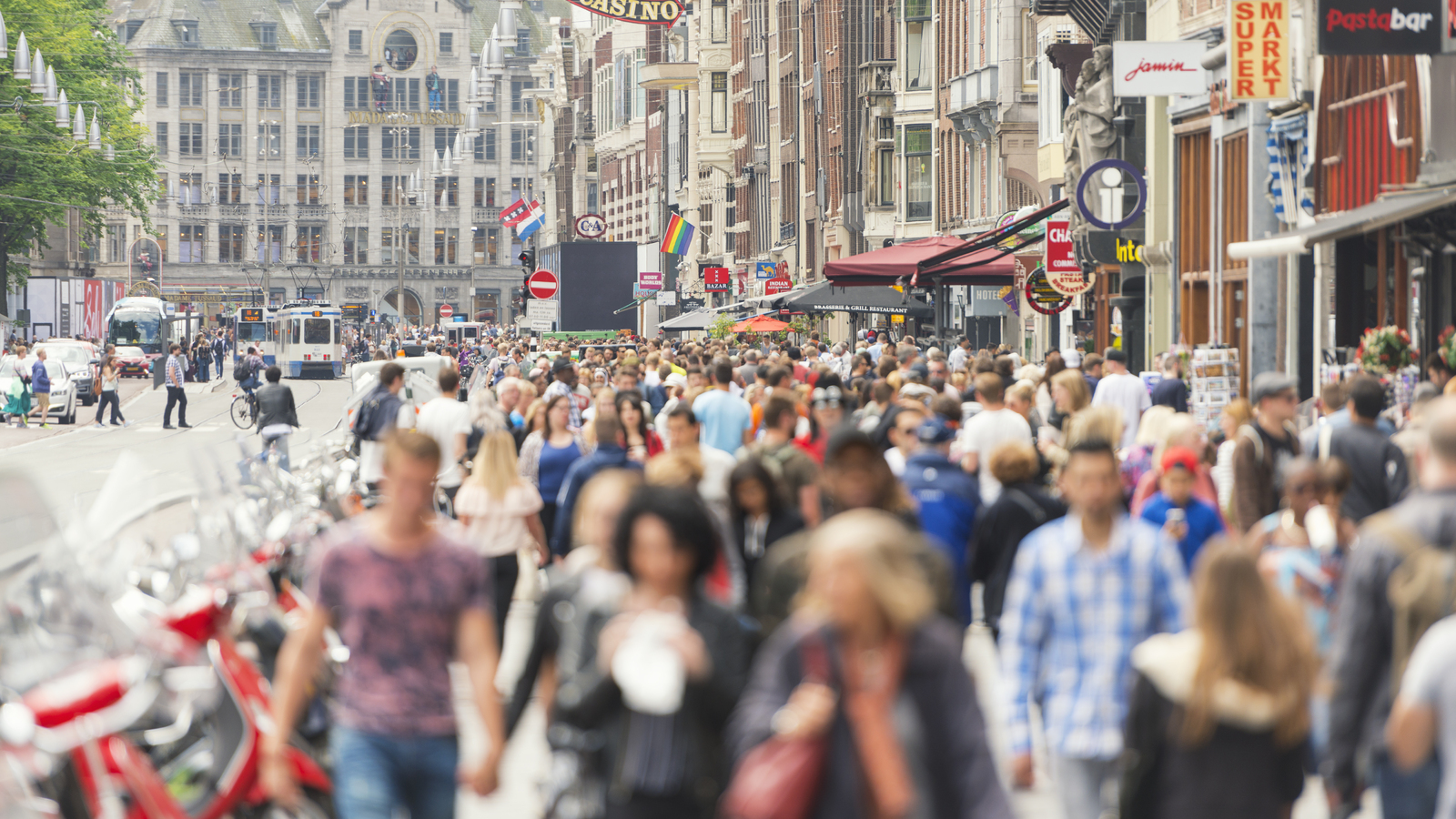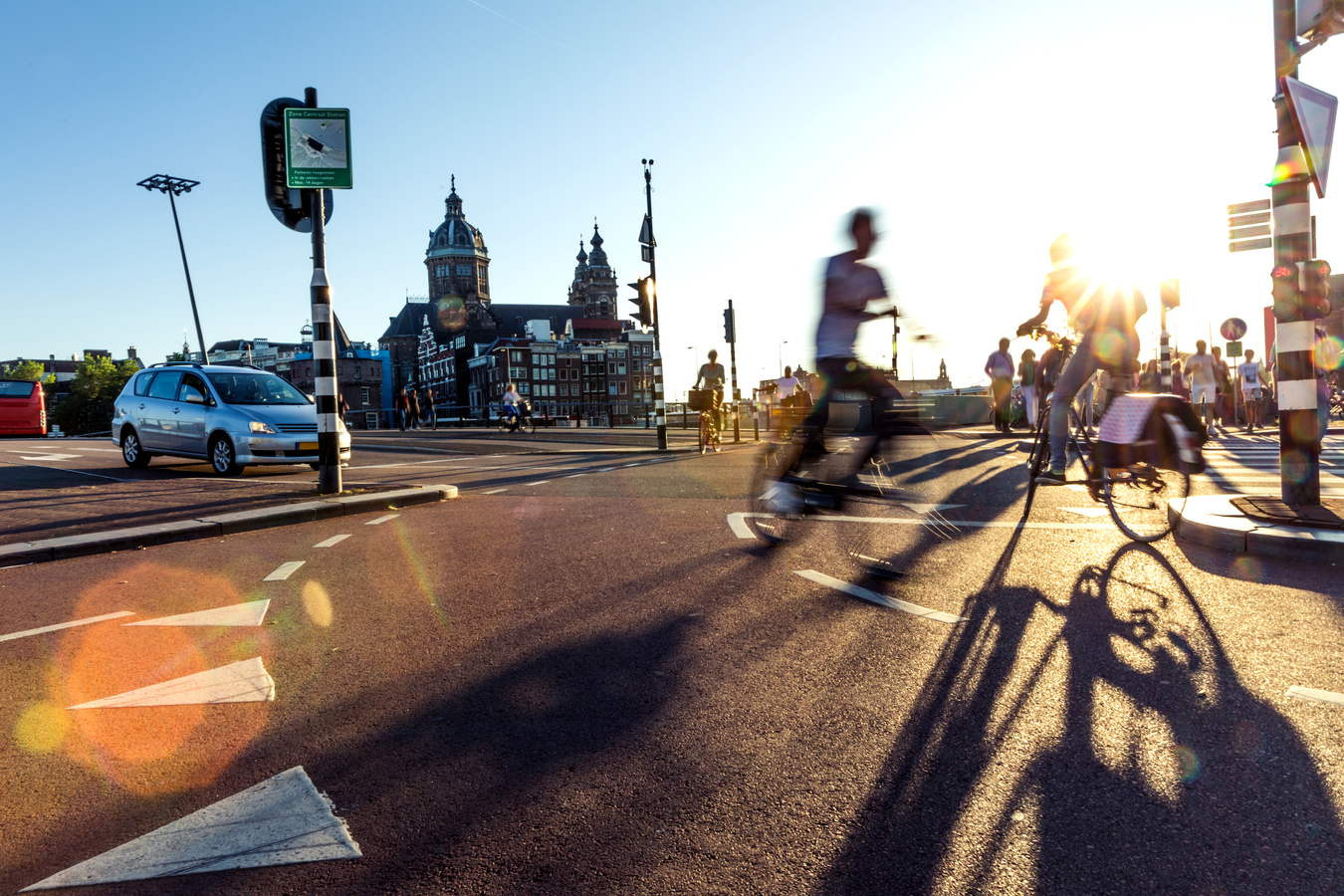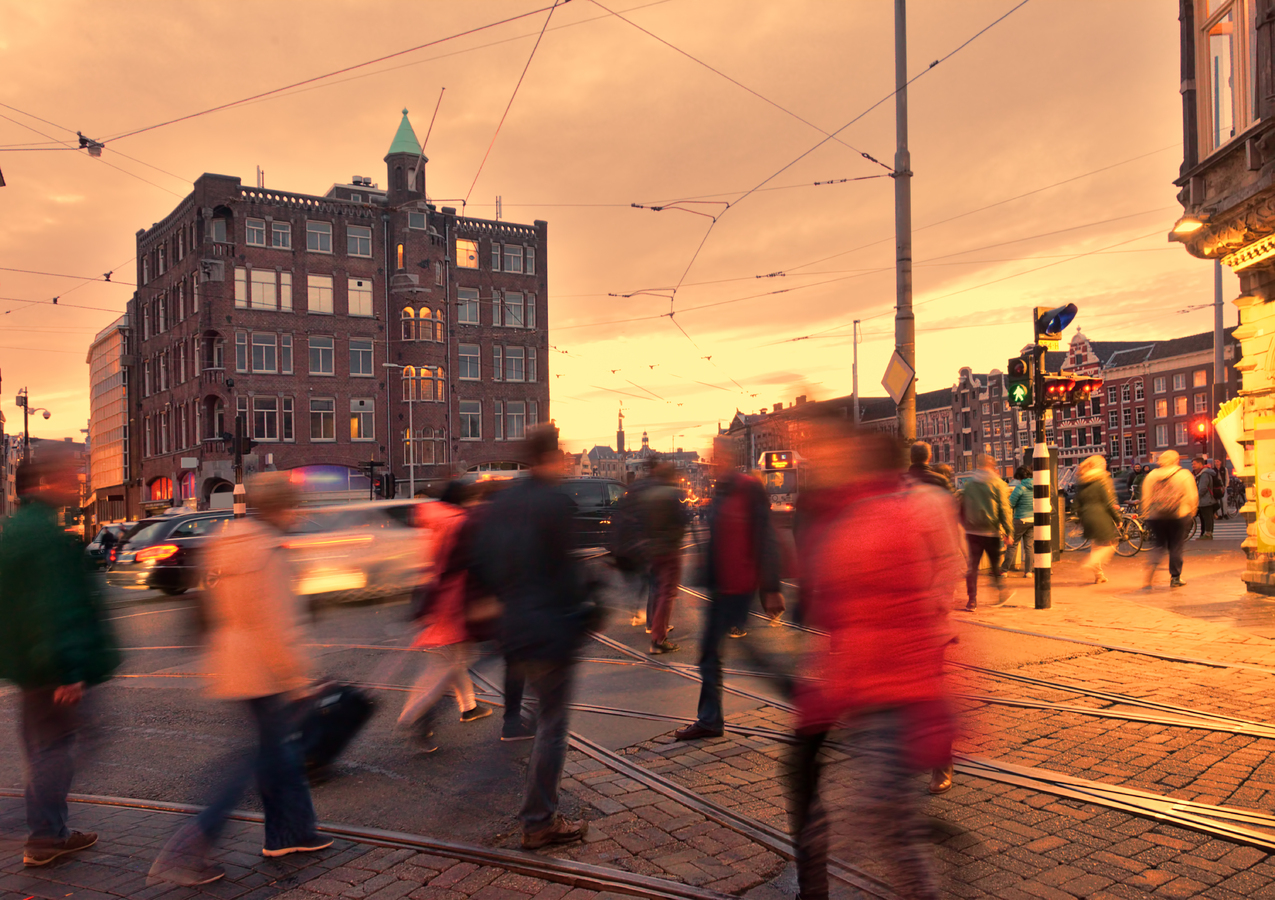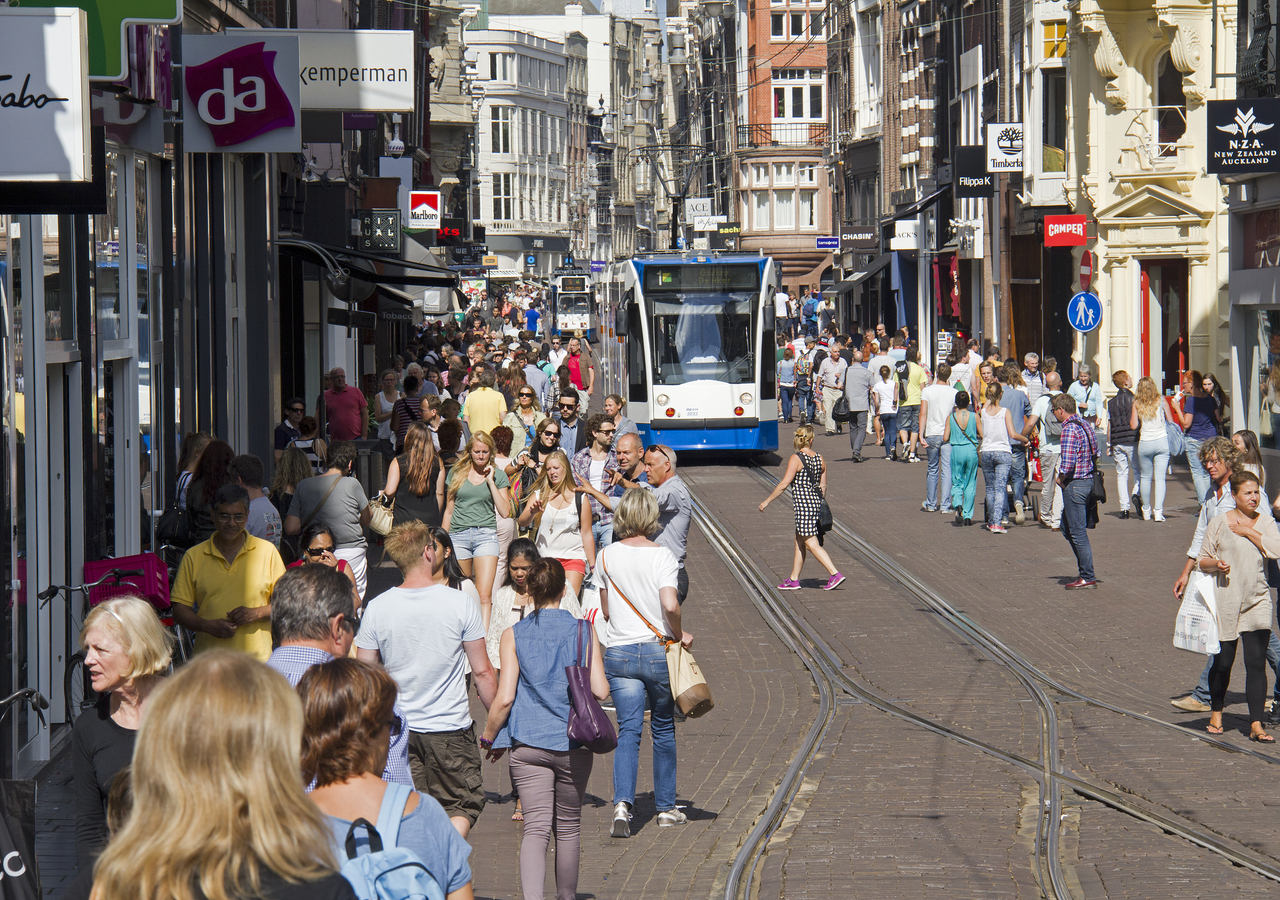Get updates from The Developer straight to your inbox Yes, please!
Why Amsterdam wants rid of the wrong kind of tourist
Amsterdam once cultivated its anything-goes reputation, but the city is now trying to shake off a certain type of visitor they call ’Liam’. Chris Stokel-Walker explains

Step out of Amsterdam’s Centraal train station and cross the first of the Dutch capital’s famed canals and it doesn’t take long to come across the first signs of the city’s reputation as the Disney World of debauchery.
Stick to the west of the city and you’ll see a group of loutish Brits in bright orange boiler suits nursing pints at Café Karpershoek, a pub dating back 400 years. Head down the eastern boulevard out of the station and you’ll come across the rat run of the Red Light District, where prostitutes tap on the windows trying to capture the attention of half-cut tourists staggering down the street.
Amsterdam is a tourist playground, with 18.5 million people visiting a city of 850,000 people every year. By 2025, an estimated 23 million visitors are expected. But what do the people living there all year round think of the influx of tourists boozing in their coffee shops and stalking their streets in packs?
“Well, let’s say tourism isn’t a bad thing in itself, but what we have seen in Amsterdam is there has been a tremendous, fast growth of tourism,” explains Bert Nap, an author and member of Amsterdam’s resident representative board, who is one of those who lives in the city. “As residents, we see crowded streets, of course, and that’s a nuisance, because we want to go to the shops and there are always tourists getting in the way.”
But that’s simply a by-product of living in a busy city. Nap’s complaints are more fundamental. “We see that the whole economy of the inner city of Amsterdam has changed.”
Like many terrible things, the bankers are to blame. Amsterdam has always been a hedonist’s paradise, yes, but the 2007 and 2008 financial crisis really ruined everything. Amsterdam’s city council needed to keep the city’s finances afloat as everything around them sunk. They hit on a happy solution: tourism. “The goal was to build as many hotels as possible, to get as many tourists as possible, because it was good for the economy,” explains Vera Al, spokesperson for the deputy mayor of Amsterdam, Udo Kock (who oversees finance and economic affairs), in a hipster coffee shop (beans, no leaves) outside the centre of the city.
Although the city is literally sinking – the low-lying flood plains of the Netherlands are notoriously precarious – the economy held firm and grew off the backs of British stag dos and central European stoners. But that had an unintended impact: the balance of power shifted from Amsterdam’s long-term residents to its short-term interlopers brought in on EasyJet and Ryanair flights. “That means residents feel excluded from their own environment,” grouses Nap. “Everything is about tourists and tourism, and not about the residents any more.”
That’s one side of the coin; one of the issues with Amsterdam for its permanent residents. The other side is people called Liam. That’s the name the city’s councillors have given to a certain type of tourist – British, usually, mostly in their 20s – who come to the city and cause problems beyond overcrowding. They’re the ones vomiting and urinating in the streets, tossing discarded cans of Heineken on the ground and generally causing a nuisance.
“We always talk about the Brits,” says Nap. “They’re not the only ones, of course, but people think that they know the image of Amsterdam: of the city where anything goes, where prostitution is a normal thing, where getting drunk and going to coffee shops to smoke cannabis is the first thing to do.” He argues that’s not the case.
But when people have that perception, their attitudes change. “With that comes the feeling for tourists that they can come to Amsterdam to have their party. So they don’t come in a mood as guests to a city, but it’s like they own the city.”
They don’t own the city, but they do contribute a significant amount to its economy. Analysis commissioned for the city of Amsterdam by SEO Research, a Dutch market research agency, shows that the added value of tourism to the city was between €2bn and €2.7bn in 2017. They spend €6.3bn in the city – 82% of which comes from foreign visitors to Amsterdam. And they help keep 61,000 people employed in the hospitality and tourism industry in the capital.
However, all the money in the world doesn’t give you a free pass to be a lout – especially outside people’s homes. Residents have been complaining about the issues that some tourists bring to the city for 10 years. “They saw it in the streets and told the city council, but weren’t listened to. Then we put on more pressure and the press started to write about the residents who thought they were not regarded as the first people to attend to in the city,” says Nap.
Things have really changed in the past few years, when the politics of the city council changed. Last year Amsterdam got a new mayor, Femke Halsema, the city’s first woman mayor – and a representative of the GroenLinks party, a green-socialist coalition formed in 1989 by subsuming four pre-existing parties. Among her responsibilities are public order and safety. She took her responsibilities seriously.
“There’s a changing mentality from the city council from the laissez faire attitude we had four years ago, to restraining and bringing back the normal situation we would like to have,” says Nap.
The surge of tourists arriving in the city is far from subtle, but the effects on Amsterdam’s permanent population can be. Michael Saarloos, the last florist left standing at the Bloemenmarkt, Amsterdam’s floating flower market, shut up shop in mid-April. His family had been selling flowers at the market, which was founded in 1862, for 76 years. He’s moving down the street away from the floating market because his everyday customers can’t move for the tourists taking photos.
“I am drowning,” he told a Dutch newspaper. The Bloemenmarkt no longer was a flower market, he explained – replaced by tourist tat. “It is full of magnets here.”
Kock’s spokesperson feels sympathy. “Amsterdam is build with narrow streets and canals,” she says. “Some people felt estranged. They didn’t feel at home any more. They say, ‘There are only shops that caters for tourists. I don’t feel catered to any more as a resident.’” So the city has taken action.
There is a city-wide halt on hotel development in the centre, as well as a ban on new tourist shops opening in the heart of Amsterdam. The passenger terminal for cruise passengers has been shifted outside the city centre, while Amsterdam’s famed beer bike has been shunted to the suburbs.
Amsterdam has also taken on alternative accommodation, and is one of a handful of cities taking the fight to Airbnb. “We heard from residents that they only see people with trollies [suitcases] in our streets,” says Al. “We feel it’s all rented out to Airbnb guests. We don’t have this community any more. It’s all tourists who are only there for a few days.” More than 800,000 people – nearly the entire permanent population of Amsterdam – stayed in an Airbnb in Amsterdam in 2017, according to the company’s data. That’s around one in eight overnight stays in the city. And so the city has levied a higher tourist tax against the hospitality sector, with the goal of raising €105m more revenue per year by 2021.
Airbnb released the data in response to an attempt to limit the number of nights private rental properties hosted on Airbnb can be rented out to 30 days a year. They pointed out that the hotels currently planned and under construction in the city – a policy that Airbnb christened the “no, unless” approach – will increase the number of hotel rooms in Amsterdam by 8,000, to a total of 43,000 by 2022.
Al explains the challenges in rewinding policy approved by preceding city councils. “Redrafting the hotel policy is really complicated,” she says. “Hotels that already have permission to build, you can’t take it back. It’s not only that it’s not fair governance, it’s also costly. It takes time,” she explains, “to change policy – especially if it’s going in completely the other direction.”
Amsterdam isn’t closing its doors to tourism. “Tourists bring a lot of jobs,” says Al. “They spend money.” And her boss, deputy mayor Kock, has a saying: “You can’t build a fence around the city. Even if you could do, the fence isn’t what you want.”
But a geofence may well be. In an attempt to diminish and dissuade the most loutish behaviour of the tourists – the Liams of this world, in Amsterdam terminology – the city has implemented a new public awareness campaign it calls Enjoy & Respect. Adverts have been posted around the city – and served up to tourists searching for flights and accommodation in Amsterdam online – that aim to gently nudge them towards being better guests. In troublespots such as the Red Light District, anyone checking their Instagsram will be shown targeted adverts.
One poster shows a typical canalside scene, emblazoned with the question “Bursting for the loo?” It then highlights a bar, overlaid with the word “Free”. Over the street is written “€140” – the amount you’d be fined.
“If you’re looking online to buy a flight or a hotel, you get these ads and they say you can have fun, but be respectful,” says Al. The decision to highlight the cost of the fines for misbehaviour is a deliberate one, she adds. “The idea is not to say don’t do it, but to say, you can do it if you want, but you’ll have to pay.”
The campaign appears to be working. Nearly half of Brits said they were more aware of the fact that they could be causing a disturbance through their actions in Amsterdam after being served the adverts. Bizarrely, a fifth of British visitors to Amsterdam said they had never considered the issue before seeing the ad campaign.
“There is a group of tourists who don’t know how to behave,” says Nap, the residents’ association representative. “They think Amsterdam is a tolerant city, and they think ‘tolerance’ means ‘anything goes’.”
Nap is woken up three or four times most nights by tourists screaming in front of his house. “That’s very, very annoying,” he says, with some understatement. And he’s not alone. Wander the city and you see handwritten signs in some windows pleading with passers-by to keep the noise down late at night.
While the city council crows about the success of the Enjoy & Respect campaign, the residents on the frontline of the furore are more cautious. “It’s partly working,” says Nap. “On the posters it says when you behave correctly it’s alright, you’re welcome, and if you misbehave you’ll be fined €140 for littering the street. But when there’s no policing and no fines given, that’s toothless. It won’t work.”
There are other contradictions in the policy that still have to be ironed out. Amsterdam has banned drinking in the streets – though no one knows about it. In my time in the city I saw stag dos quietly nursing cans of Heineken at 10am in the heart of Amsterdam’s tourist district, trying to blunt the sharp edge of their hangover from the night before. “In every shop we sell alcohol in an area where alcohol is forbidden to drink on the streets.”
More fundamentally, the biggest issue is difficult to overcome: people will continue to want to visit one of Europe’s most beautiful cities for a city break. They’ll come from all over the world. They can behave better, but the permanent residents will still be outnumbered by a factor of 20 to one in their own homes.
“We can’t stop the growth,” says Al. “Tourism is going to grow. But you can take measures to make sure that people feel as at home as possible.”
Sign up to our newsletter
Get updates from The Developer straight to your inbox
Thanks to our organisation members
Become a member
© Festival of Place - Tweak Ltd., 124 City Road, London, EC1V 2NX. Tel: 020 3326 7238



